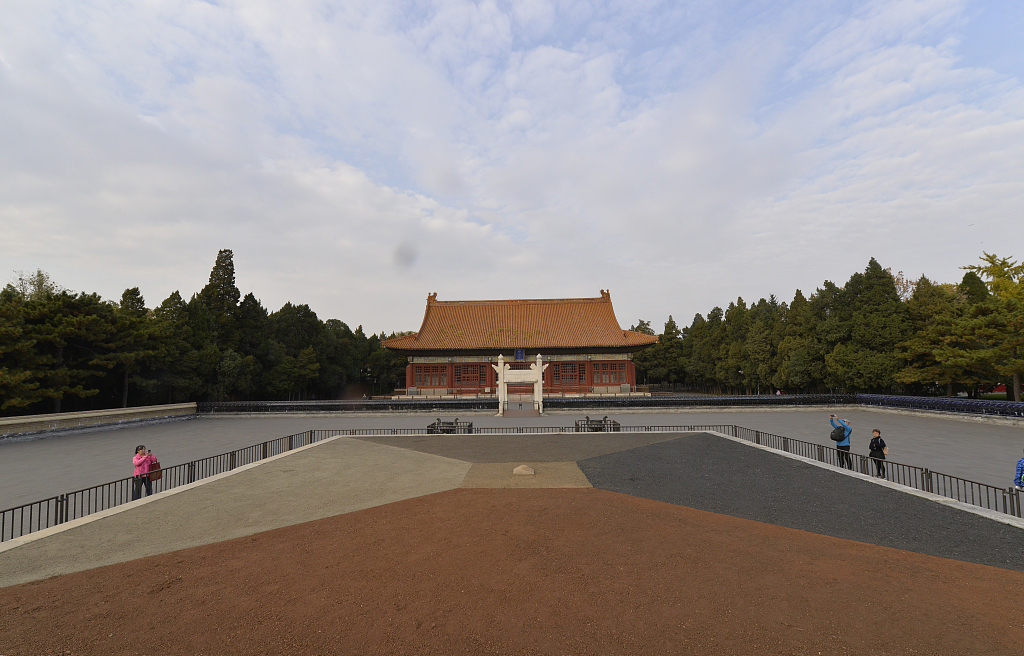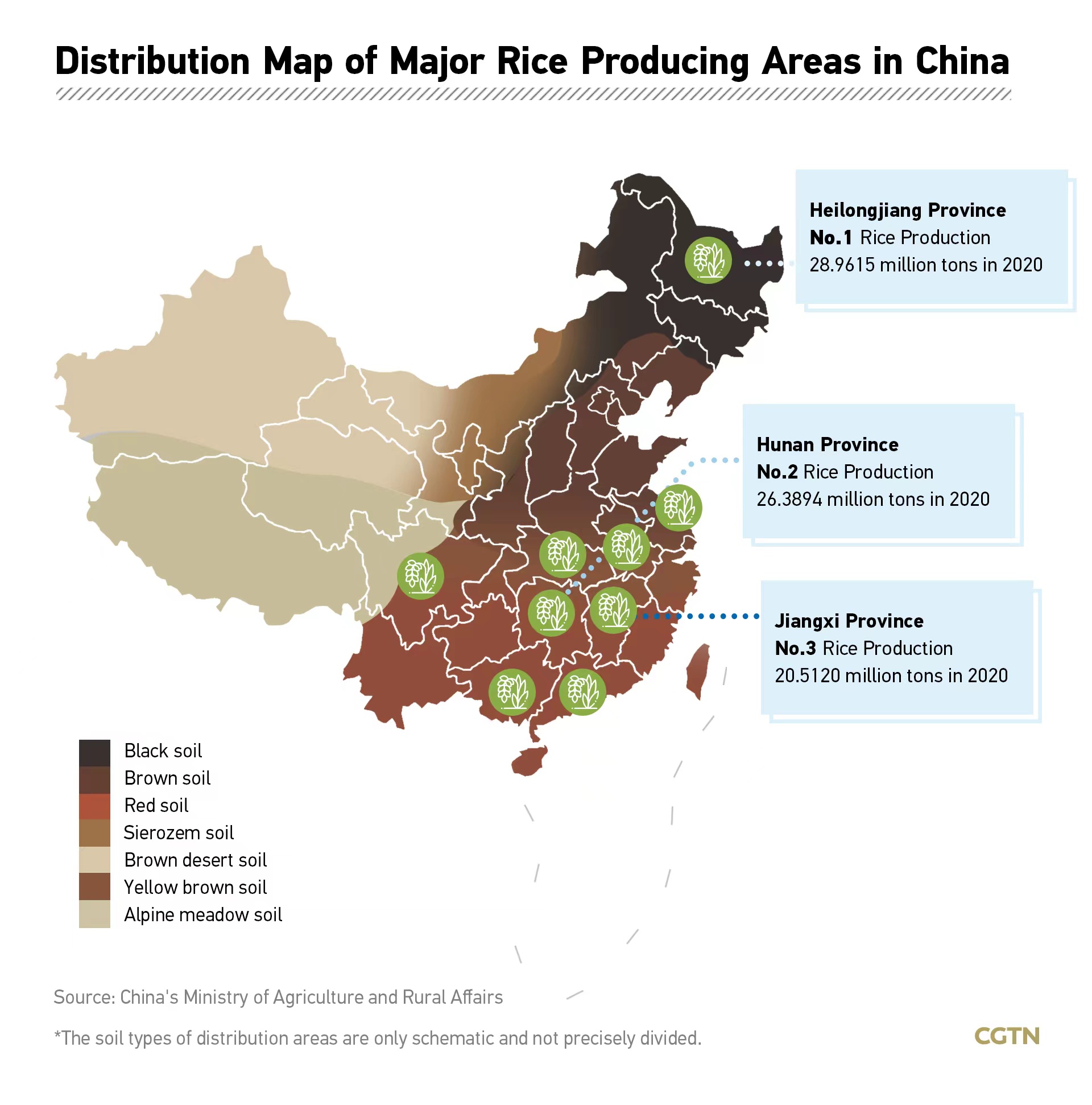In Beijing's Zhongshan Park, visitors can see the altar where, every spring, emperors came to pray to the gods in charge of soil and crops for good harvest.
On the altar lies a slab of soil in five colors: yellow, red, white, grey and black. Since ancient times, the Chinese people have learned the characteristics of each soil type and how to cultivate it accordingly.

A slab of soil in five different colors in Zhongshan Park, Beijing. /VCG
A slab of soil in five different colors in Zhongshan Park, Beijing. /VCG
In fact, researchers have found over 400 different soil colors in China, classified in about 12 color groups. And these colors might explain why China has been able to feed its population of over 1.4 billion.
What makes soil colors different
China has a rich diversity of soil types, reflected in numerous colors. Soil color is mainly determined by the humus content and mineral composition. Humus which is black and brown, can affect the depth of soil color. The higher the humus content, the darker the soil color. And a variety of colored minerals determine the diversity of soil color.
For example, the black soil in northeastern China and the brown soil in central China have rich humus. However, brown soil contains more iron oxides, which contribute to its brownish color. Red soil in southern China gets its color from iron minerals as well, but the tropical rainy climate facilitates the ferric salts to dissolve and show their brick red color.
With less humus content and gravel, brown desert soil has an intrinsic light color because of the hot weather and drought in northwestern China. On the Qinghai-Tibet Plateau in Southwest China, the soil, mainly alpine meadow soil, is grayish brown in color, influenced by the plateau's moist and cold environment.
Therefore, people can tell the fertility of soil based on its color. It is commonly believed that black soil is the most fertile soil type in the world, guaranteeing high agricultural yields. Brown soil ranks second. According to the Chinese Academy of Sciences, the more humus the soil has, the more fertile it will be. That explains why the humus-rich black soil is the most fertile of all types.
China's various climates and landscapes create different colors of soil and diversify crop choices nationwide, making it a producer of a wide range of crops, in addition to the commonly-known food sources such as rice, corn, wheat and soybeans. The State Council's statistics collected from 2016-2020 show that the entire country has registered over 16,800 crop breeds.
How different soil colors affect crop choices
Over 7,000 years ago, a wild plant was discovered in the muddy land near Taihu Lake in East China. The ancestors found its seeds are edible with stable yearly yields. The plant was cultivated to become one of the most important crops of China: rice. To this day, rice still favors the muddy red soil of southern China.
Hunan Province, for example, has become the second largest rice producer in China. Data from Hunan's second soil survey shows that about 51 percent of its soil is red. The warm inland province also provides enough heat that the rice plant needs for ripening.

You might find one exception in the above map: northeast China's Heilongjiang Province. The province, sitting at a much higher latitude, not only produces rice, but also tops other regions in the output.
In fact, the black soil of Heilongjiang, famous for its fertility, can sustain numerous crops, including rice. Soil is not the only factor that affects harvest. The big temperature difference in Heilongjiang has enabled the province to grow a different rice breed with round seeds, compared with the oval one in southern China.
The following graphics of the top producers of four different kinds of crops also reflect what soil they prefer: corn favors black and brown soil, wheat likes brown and brown desert soil, soybeans grow best in black, brown and red soil, while potato benefits from black, brown and red soil.
In February 2022, China launched its third nationwide soil survey 40 years after the last one was conducted. The survey is expected to offer more information on the soil types of the country as well as their health conditions.
(Graphics designed by CGTN's Li Jingjie. Gao Mingkun and Gao Yuxin also contributed to the story.)
(If you want to contribute and have specific expertise, please contact us at nature@cgtn.com.)